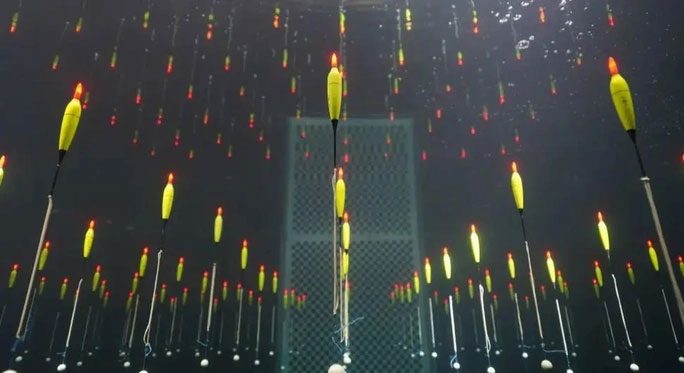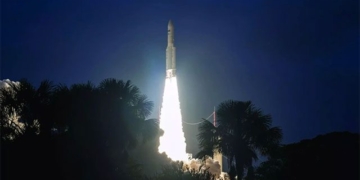The Chinese “warrior” TRIDENT is the largest underwater neutrino telescope in the world, set to be installed at a depth of 3,500 meters in the South Pacific Ocean to capture the “ghost particles” that continuously rain down on Earth.
Chinese scientists have announced that they are constructing the Deep Tropical Ocean Neutrino Telescope (TRIDENT), also known as “Hai Ling,” meaning “Ocean Bell”, which will be anchored to the ocean floor in the South Pacific.
TRIDENT will be the largest telescope in the world and the largest ghost particle detector – that is, neutrino – in existence. Neutrinos are one of the most abundant types of cosmic particles that rain down on Earth, yet they remain one of the most mysterious.

China’s TRIDENT neutrino detector – (Graphic: SHANGHAI JIAOTONG UNIVERSITY).
According to Live Science, up to 100 billion neutrinos pass through every square centimeter of your body every second.
The nickname “ghost particle” comes from the near-zero mass of the neutrino atomic particle, as well as its ability to interact with virtually no other particles, allowing it to pass through us, through all objects, and even through the Earth like a ghost.
By capturing and slowing down neutrinos, physicists hope to trace the origins of particles that belong to the dawn of the universe, revealing events billions of light-years away, such as ancient supernovae or past galaxy collisions.
According to Xu Donglian, the scientific director of the TRIDENT project, using Earth as a shield, this particle detector aims to capture ghost particles that penetrate from the other side of the planet, passing through the Earth’s center to reach the detector located on the ocean floor opposite.
This suggests another ambition mentioned by many scientists, which is to capture how neutrinos traverse the Earth to gain insights into the deep structures within the planet.
This massive particle detector will consist of over 24,000 optical sensors strung together in 1,211 strings, each 700 meters long, pointing upwards from the anchoring point.
The entire setup will have a diameter of 4 kilometers, scanning for neutrinos within a 7.5 km3 range around it. TRIDENT is expected to be completed and operational by 2030.
The largest ghost particle detector in the world currently is IceCube, located at the Amundsen-Scott South Pole Station in Antarctica, which has a monitoring volume of 1 km3.




















































